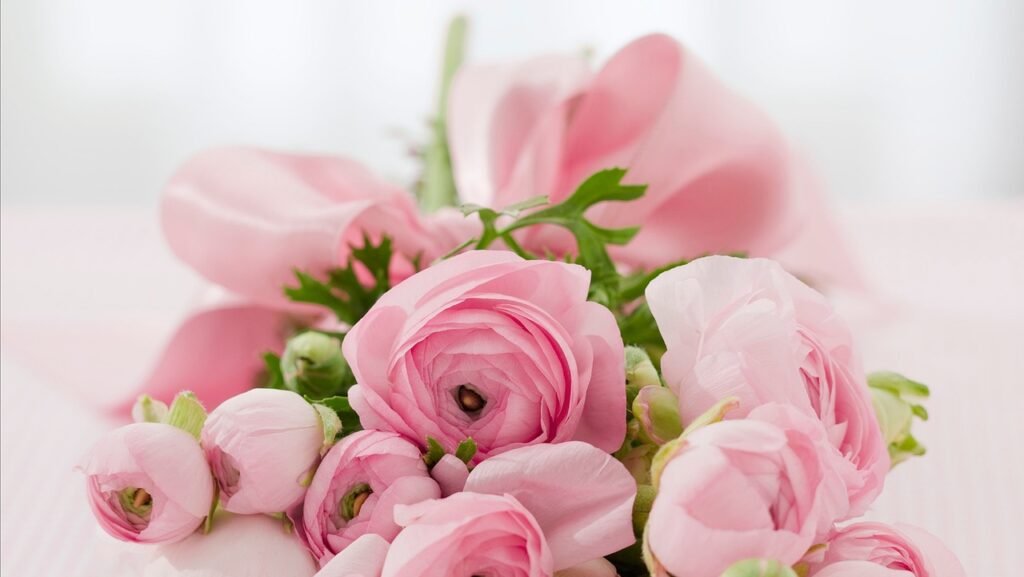
Flower is a symbol of much more than just beauty; it carries deep meanings that have been used for centuries to convey messages and emotions. Flower is a symbol of various sentiments, with each bloom holding a unique meaning—like the red rose symbolizing passionate love or the white lily representing purity and remembrance. Flower is a symbol of communication in the language of flowers, known as floriography, allowing people to express their feelings through carefully chosen blooms. Flower is a symbol of emotions, and understanding these meanings adds a profound layer of significance to any floral arrangement or gift.
Key Takeaways:
- Flower is a symbol of emotions and messages, with each type of flower conveying specific meanings.
- Flower is a symbol of color, where red denotes passion, white signifies purity, and pink represents grace.
- Flower is a symbol of floriography, the art of using flowers to communicate sentiments in a meaningful way.
- Flower is a symbol of cultural and traditional significance, rooted in history and adding depth to its meanings.
By appreciating that flower is a symbol of more than just beauty, you can transform a simple bouquet into a powerful expression of emotion and sentiment.
What is the meaning behind flowers?
Understanding the symbolic meaning of roses
Roses symbolize a wide range of emotions, from love and passion to friendship and admiration. For instance, the red rose is a symbol of passionate love, while the white rose represents purity and remembrance.
Exploring the language of flowers
Flowers have their own symbolic language, allowing individuals to convey sentiments through different blooms. The language of flowers provides a unique way to express emotions and communicate without words.
How do flowers symbolize different emotions?
Flowers symbolize various emotions such as love, admiration, and loyal love. Each bloom carries its own distinct symbolism, making them a powerful means of expressing feelings.
What are the popular flowers and their meanings?
Popular flowers like the lily, carnation, and tulip hold significant meanings. The lily represents rebirth and purity, while the carnation symbolizes admiration and love. Tulips are associated with elegance and beauty.
Interpreting the symbolism of different colored flowers
The colors of flowers hold symbolic meanings. For instance, white flowers symbolize purity and pure love, red flowers signify passionate love, and pink flowers represent grace and admiration.
Why do certain flowers symbolize specific attributes?
Each flower holds its own unique significance due to historical, cultural, and traditional associations. The chrysanthemum, for example, symbolizes loyalty and admiration, while the red rose is universally recognized as a symbol of love and passion.
Unraveling the significance of the chrysanthemum
The chrysanthemum represents loyal love and admiration, making it a popular choice for various celebrations and gifts.
The symbolic representation of the red rose
A red rose is a timeless symbol of passionate love, often associated with romantic gestures and Valentine’s Day.
Exploring the meaning behind the lily
Lilies symbolize purity, rebirth, and remembrance, making them a common choice for funerals and memorial services.
Understanding the symbolism of the carnation
Carnations are associated with admiration and love, making them a meaningful gift for expressing affection.
Deciphering the significance of tulips
Tulips convey elegance, beauty, and passionate love, allowing individuals to express their sentiments through these vibrant blooms.
How do flowers convey messages through bouquets?
Bouquets are carefully arranged to convey specific messages and sentiments, with each flower and its placement holding significance. Different flower bouquets can express love, friendship, and sympathy, among other emotions.
Exploring the language of different flower bouquets
Different flower bouquets are crafted to convey specific messages, allowing individuals to express their emotions through the arrangement of blooms.
How do flowers symbolize various sentiments in a bouquet?
Each flower in a bouquet carries symbolic meaning, enabling the arrangement to convey a range of sentiments such as love, joy, and sympathy.
Interpreting the symbolism behind the daisy in a bouquet
Daisies in a bouquet symbolize innocence, purity, and new beginnings, making them a fitting choice for various occasions.
Understanding the significance of daffodils in a bouquet
Daffodils represent rebirth, new beginnings, and the arrival of spring, adding a meaningful touch to floral arrangements.
How do different flowers in a bouquet convey elegance and love?
By combining different flowers in a bouquet, one can convey elegance, love, and admiration, creating a visually stunning and emotive arrangement.
What are the symbolic meanings of specific colored flowers?
Specific colored flowers hold distinct symbolic meanings, allowing individuals to convey specific emotions and sentiments through their choice of blooms.
Deciphering the symbolism of white roses
White roses symbolize purity, remembrance, and new beginnings, making them a poignant choice for various occasions and events.
Understanding the significance of red flowers in symbolism
Red flowers symbolize passionate love, desire, and romance, evoking strong emotions and sentiments.
Exploring the symbolic representation of pink flowers
Pink flowers symbolize grace, admiration, and sweetness, offering a delicate and meaningful touch to floral arrangements.
What do sunflowers symbolize and represent?
Sunflowers symbolize loyalty, adoration, and longevity, representing warmth and positivity in various symbolic contexts.
Interpreting the significance of blue and green flowers in symbolism
Blue flowers symbolize serenity, tranquility, and calmness, while green flowers represent nature, renewal, and growth, adding a refreshing and symbolic element to arrangements.
Why do different flowers represent specific emotions and attributes?
Flowers take on specific symbolic meanings due to their historical, cultural, and traditional associations, allowing individuals to express emotions and convey sentiments through these timeless blooms.
Unveiling the symbolism of purple flowers
Purple flowers symbolize admiration, enchantment, and grace, adding a regal and meaningful touch to floral arrangements and gifts.
Exploring the significance of lotus flowers in symbolism
Lotus flowers symbolize purity, enlightenment, and rebirth, holding deep spiritual and symbolic significance in various cultural and traditional contexts.
Understanding the language of flowers and their symbolic meanings
Each flower holds its own symbolic meaning, allowing individuals to convey specific emotions, sentiments, and messages through their choice of blooms and floral arrangements.
How do different flowers symbolize love, friendship, and strength?
Flowers symbolize love, friendship, and strength through their unique and diverse meanings, enabling individuals to express these emotions and attributes through the gift of blooms.
Interpreting the meanings and symbolism behind different flower arrangements
Each flower arrangement conveys a specific message and sentiment, with the selection and combination of blooms carrying symbolic meanings that add depth and significance to the overall arrangement.
FAQ
- What flower is a symbol of love? The red rose is the flower most commonly associated with love. It symbolizes passionate love, romance, and deep affection, making it a popular choice for romantic gestures and occasions like Valentine’s Day.
- Which flower is a symbol of friendship? The yellow rose is the flower that symbolizes friendship. It represents joy, warmth, and platonic affection, making it an ideal gift for friends to express their gratitude and appreciation.
- Why is the lotus flower a symbol of purity? The lotus flower is a symbol of purity because it emerges clean and beautiful from muddy waters, representing spiritual enlightenment, rebirth, and purity of the soul in various cultures, especially in Buddhism and Hinduism.
- What flower is a symbol of strength? The gladiolus is the flower that symbolizes strength. It represents moral integrity, courage, and the strength of character, making it a meaningful choice for expressing admiration for someone’s resilience.
- How does flower color symbolize different emotions? Flower color is a symbol of different emotions: red flowers typically symbolize love and passion, white flowers signify purity and new beginnings, and pink flowers represent grace and admiration. Each color adds a layer of meaning to the flower’s symbolism.
- Which flower is a symbol of new beginnings? The daffodil is the flower that symbolizes new beginnings. It represents rebirth, renewal, and the arrival of spring, making it a popular choice for celebrating fresh starts and new chapters in life.
- Why is the chrysanthemum a symbol of loyalty? The chrysanthemum is a symbol of loyalty because of its long-lasting nature and historical associations with friendship and loyalty in various cultures, particularly in Asian traditions.
- What flower is a symbol of purity and remembrance? The white lily is the flower that symbolizes purity and remembrance. It is often used in funerals and memorials to honor the memory of loved ones and to represent the purity of the departed soul.
- How do flowers symbolize different emotions in a bouquet? Flowers symbolize different emotions in a bouquet through their types and colors. For example, a bouquet of red roses symbolizes love, while a combination of white lilies and yellow roses can represent sympathy and friendship. The careful selection of flowers in a bouquet conveys specific sentiments.
- What is the significance of purple flowers? Purple flowers are a symbol of admiration, enchantment, and grace. They add a regal touch to floral arrangements and are often associated with dignity and pride, making them a perfect choice for expressing admiration and respect.



